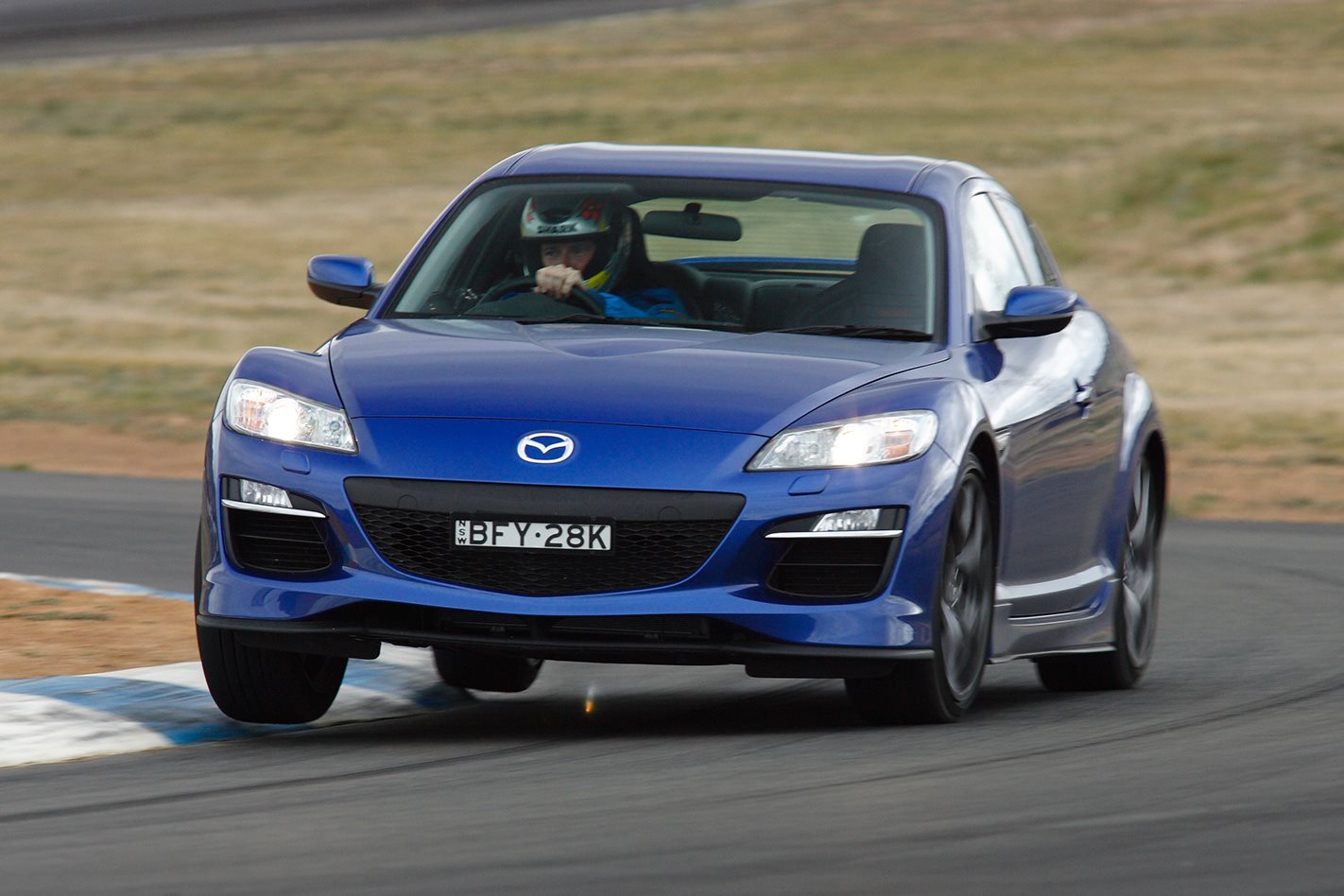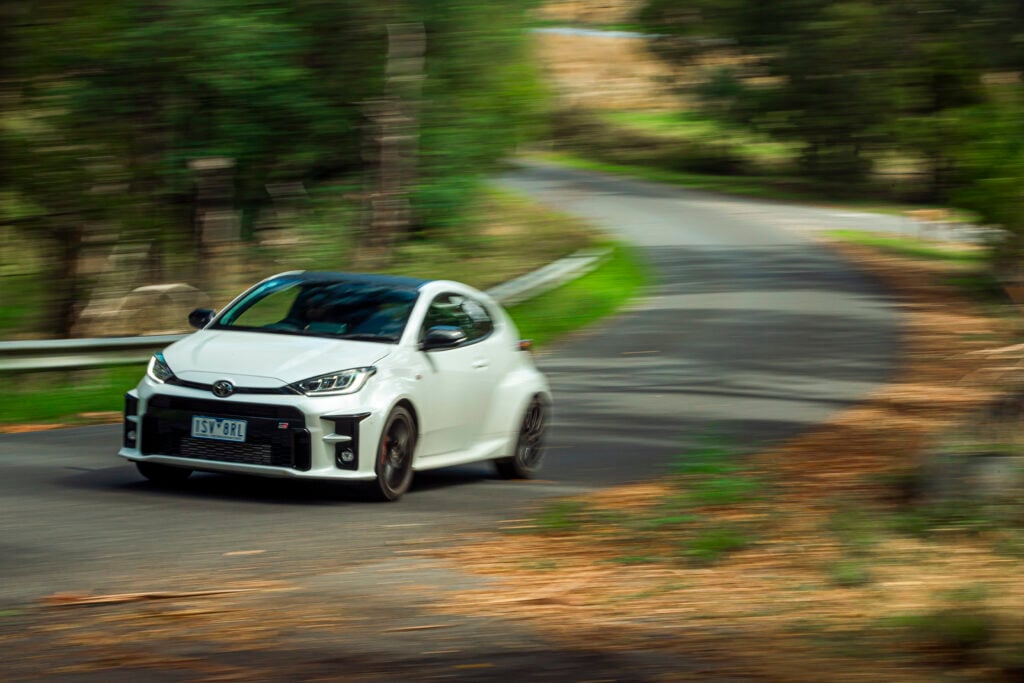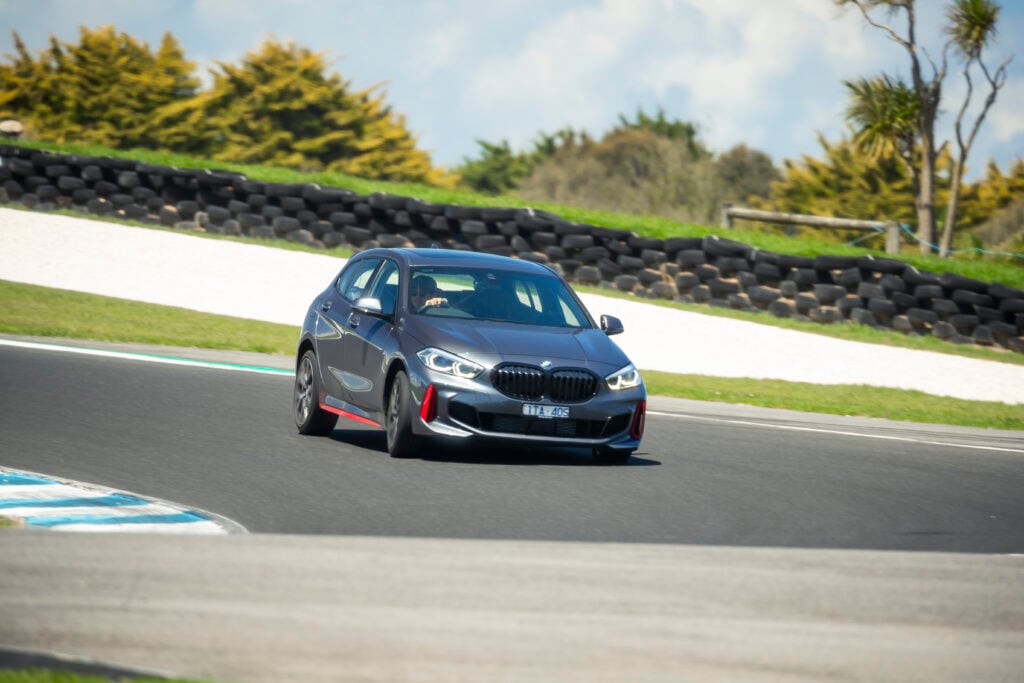It’s been a long time between drinks for Mazda’s RX-8.
This Performance Car Of The Year article was first published in MOTOR Magazine November 2008.
Following the fanfare that surrounded the long-awaited revival of rotary power back in 2003, and the praise lavished on the RX-8’s suave dynamics and its innovative layout, virtually nothing has happened since. An MPS-badged RX-8 with a larger-capacity rotary never eventuated, leaving Mazda’s freestyle-doored sports coupe to languish in a box marked ‘unfulfilled potential’.

The original RX-8 was already blessed with perfect 50/50 weight distribution and arguably the world’s best electric steering, and the GT simply takes that great basis and runs with it.
Or at least it tries to. Despite the Renesis 13B having been tweaked for more low- to mid-range torque, the 7kW it lost back in 2006 has done the RX-8’s acceleration no favours, and it still needs 5500rpm on board to properly liven up. Even in isolation, it doesn’t feel particularly quick, and the GT’s mediocre performance at Cootamundra airport proved as much.

The old 177kW RX-8 manual could comfortably clock 14.8sec to 400m, but this 170kW GT – even with its shortened ratios – struggled to nail a 15.35 (at just 148.7km/h – two kays slower than the Clio).
Indeed, the only increment where the RX-8 did beat the Clio in a straight line was terminal speed at 1000m (190.2km/h v 188.7), making it both the slowest of all 11 cars, and several tenths adrift of Performance Car of the Year’s supposed sub-15-second quarter-mile qualifying time. And we thought the Clio could use more poke…
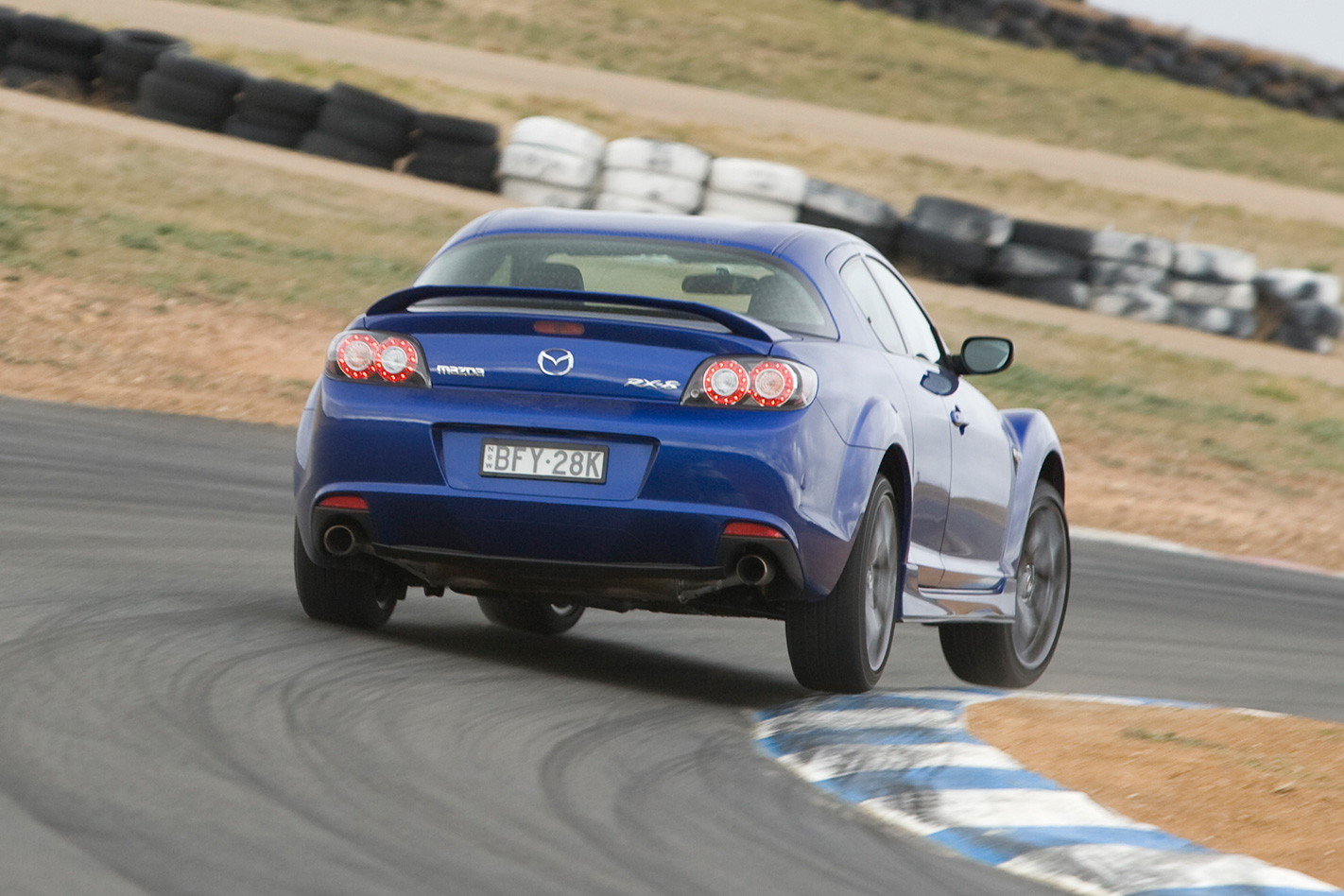
Even with its power deficit, the RX-8’s LSD-equipped rear drifts subtly through corner exits and its handling balance is faultless. Combine all this with figure-hugging Recaro buckets and an excellent electric-steering set-up, and it’s no wonder the RX-8 GT featured so prominently in the corner-speed rankings at Wakefield. If only its brakes didn’t turn mushy and add stopping distance when under pressure.
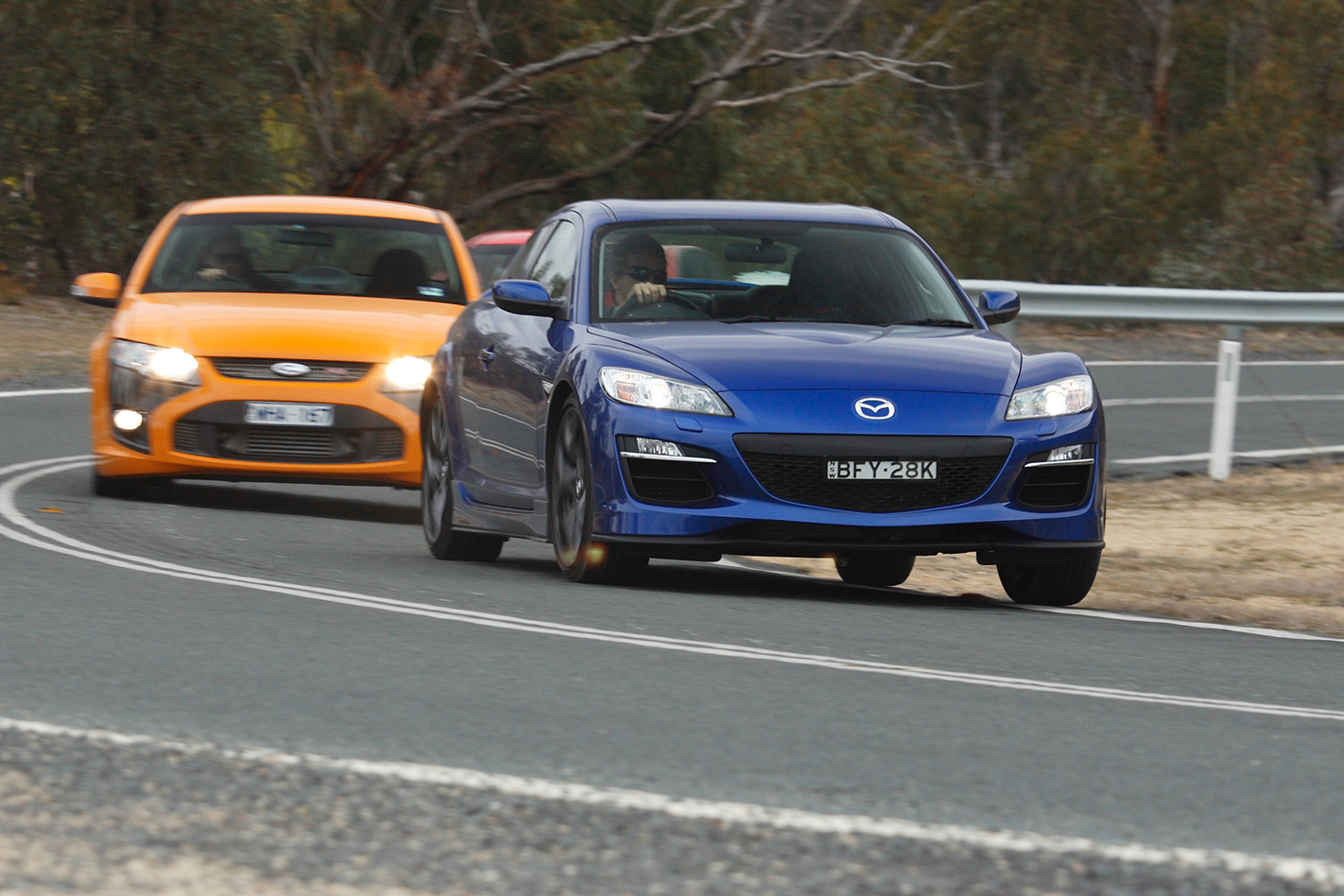
If the test GT performed to expectation, the outcome might have been different, but instead it felt flat and wilted against very strong competition.
The RX-8 is a better car for being a rotary, and the world is certainly a more interesting place with the RX-8 in it, but what Mazda really needs is a new-generation RX-7.

